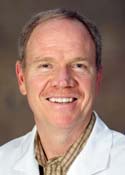A new system that sent patients to designated Cardiac Receiving Centers dramatically increased the survival rate of victims of sudden cardiac arrest in Arizona, according to a new study.
The study, published Thursday in Annals of Emergency Medicine (http://www.annemergmed.com/article/S0196-0644(14)00487-9/fulltext), shows that the survival rate increased by more than 60 percent during the four-year period of the effort, from 2007 to 2010. More importantly, when the results were adjusted for the various factors that significantly impact survival (such as age and how quickly emergency personnel reached patients after their cardiac arrest), the likelihood of surviving more than doubled. In addition, the likelihood of surviving with good neurological status also more than doubled.
 This statewide effort was accomplished through the Save Hearts Arizona Registry and Education-SHARE Program, a partnership involving the Arizona Department of Health Services, the University of Arizona, and more than 30 hospitals and 100 fire departments and emergency medical service agencies. The SHARE Program is part of a network of statewide cardiac resuscitation programs dedicated to improving cardiac arrest survival and working together as the HeartRescue Project.
This statewide effort was accomplished through the Save Hearts Arizona Registry and Education-SHARE Program, a partnership involving the Arizona Department of Health Services, the University of Arizona, and more than 30 hospitals and 100 fire departments and emergency medical service agencies. The SHARE Program is part of a network of statewide cardiac resuscitation programs dedicated to improving cardiac arrest survival and working together as the HeartRescue Project.
 “We knew lives would be saved if the hospitals implemented the latest cutting-edge guidelines for post-cardiac arrest care and we were able to get cardiac arrest patients to those hospitals, similar to what is done for Level 1 trauma patients,” said lead study author Daniel Spaite, MD, director of EMS Research at the University of Arizona Emergency Medicine Research Center in Phoenix and Tucson.
“We knew lives would be saved if the hospitals implemented the latest cutting-edge guidelines for post-cardiac arrest care and we were able to get cardiac arrest patients to those hospitals, similar to what is done for Level 1 trauma patients,” said lead study author Daniel Spaite, MD, director of EMS Research at the University of Arizona Emergency Medicine Research Center in Phoenix and Tucson.
“We worked closely with the hospitals around the state to implement these guidelines and then formally recognized the hospitals as Cardiac Receiving Centers. We then developed protocols for our EMS agencies to transport post-cardiac arrest patients to those centers,” said Ben Bobrow, MD, medical director of the Bureau of Emergency Medicine Services and Trauma System for the Arizona Department of Health Services in Phoenix. “Our overarching goal was to have more cardiac arrest victims leave the hospital in good shape and be able to return to their families and careers. As we suspected, ‘regionalizing’ the care for these critically-ill patients, markedly increased their likelihood of survival and good neurologic outcome.”
According to Dr. Spaite, who is a professor and the Virginia Piper Distinguished Chair of Emergency Medicine at the UA College of Medicine, “Taking these patients directly to a hospital optimally prepared to treat cardiac arrest gave them a better chance of survival and of preventing neurologic damage, a common result of these cardiac events.”
Under the study, 31 hospitals, serving about 80 percent of the state’s population, were designated as Cardiac Receiving Centers between December 2007 and November 2010. Some 55 emergency medicine service agencies also participated in the study.
Dr. Bobrow, who is also a professor of emergency medicine at the UA College of Medicine-Phoenix and an emergency physician at Maricopa Medical Center, said the study shows that just transporting these patients to the nearest emergency department does not maximize the likelihood of a positive outcome. According to Bobrow, “Our data show that if the state approaches this as a regionalized system of emergency care delivery, significantly more people survive cardiac arrest.”
Dr. Spaite said that dozens of cardiac arrest victims survived as a direct result of this effort in Arizona, and implementing similar regionalized post-cardiac arrest systems of care around the country “could potentially save thousands of lives each year from one of the leading causes of death.”
The state began recognizing Cardiac Receiving Centers in 2007, and the following year began allowing EMS agencies to transport arrest victims to those centers as long as the increase in transport time to reach the receiving center was less than 15 minutes.
“This is the first statewide effort of its kind,” said Dr. Bobrow. “And while there have been individual or small groups of hospitals that have reported on implementing post-arrest care, widespread specialized regionalization, especially on a scope as large as a state, has not been previously reported anywhere in world. What happened in our state was very encouraging and exciting!”
The University of Arizona Sarver Heart Center receives funding from the Medtronic Foundation through the HeartRescue Grant to support community-based translation of resuscitation science, including the SHARE program and this study.

